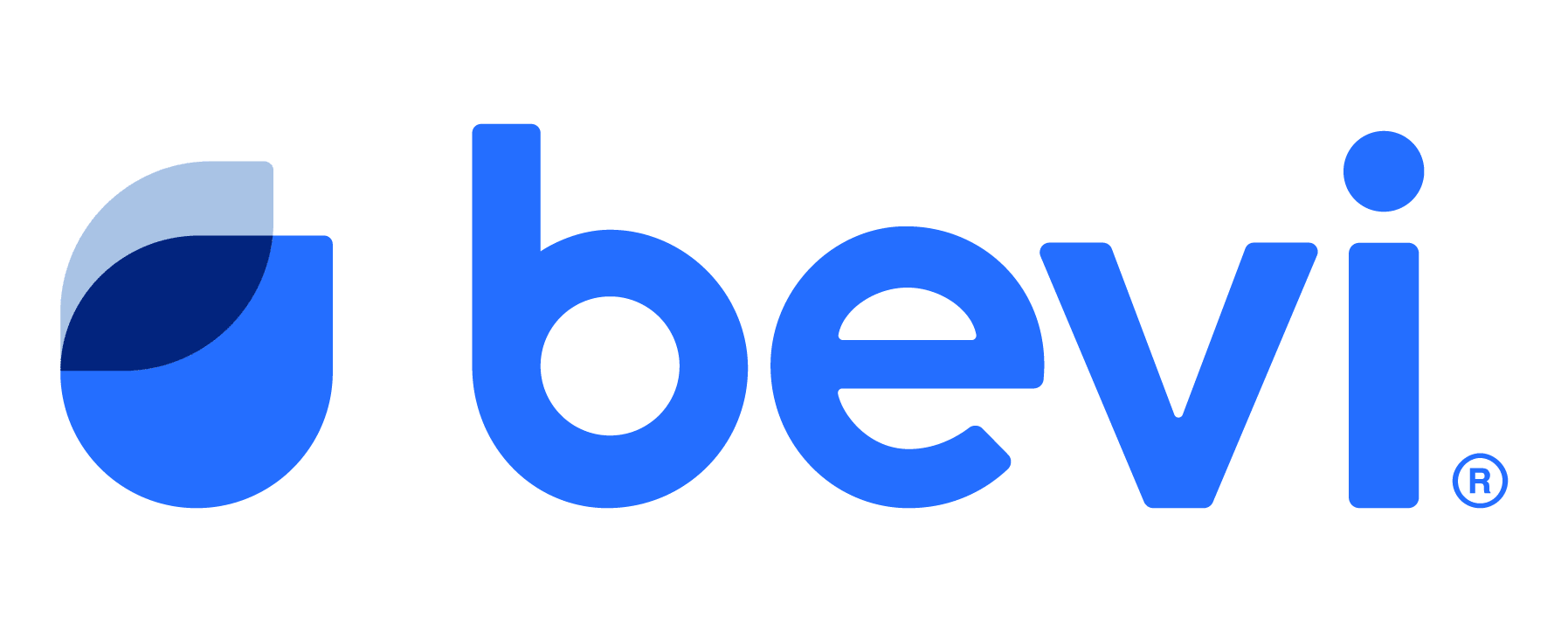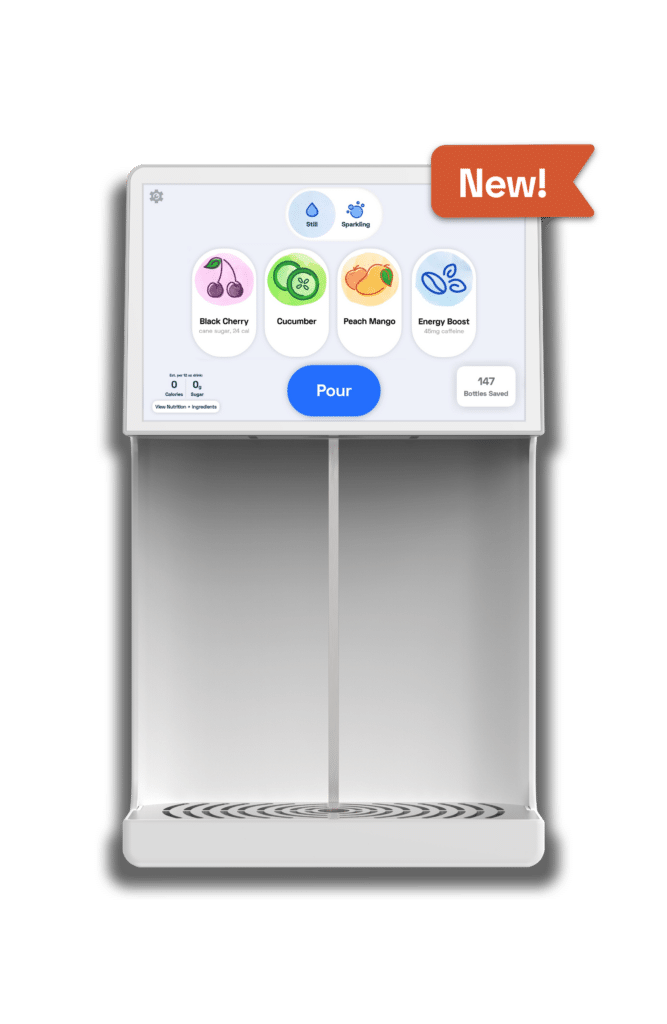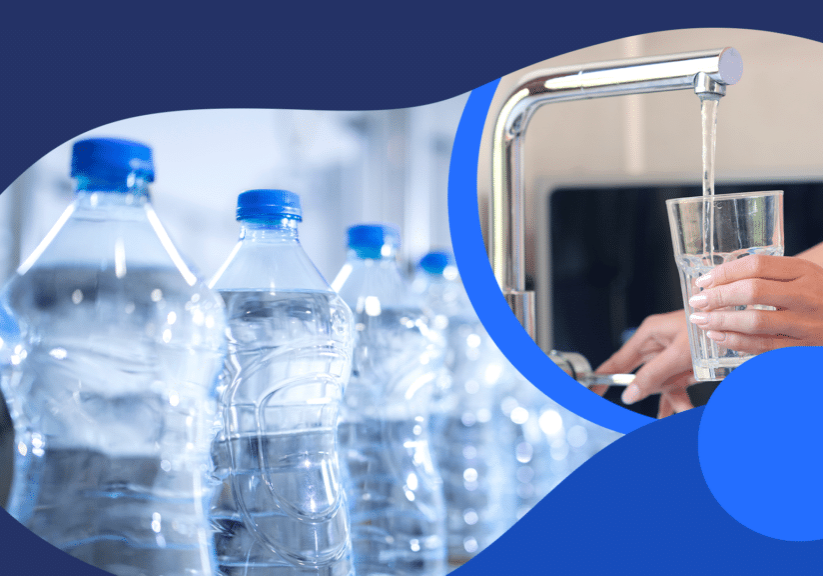January 31, 2025. Clever marketing campaigns have shaped our perception of bottled water as a cleaner, safer, and more premium alternative to tap water. But is it really? No, it’s not. Just as tap water is impacted by pollutants from the environment, the water you get from a bottle has its own potential nasty sources of contamination. Most importantly, there are certain toxic chemicals—such as microplastics—that you’ll get way more of from bottled water vs. tap water.
When it comes to one being better than the other, the answer is clearly tap water, much to the chagrin of the many thousands of people working on the water brands at PepsiCo, Coca-Cola, Nestlé, and other brands.
Big Beverage has spent decades and hundreds of millions of dollars convincing consumers that their bottled water—along with their sodas, sports and energy drinks, new flavored sparkling water concoctions—are not mere conveniences for staying hydrated, but rather, the only way to safely drink a beverage. Susan Wellington, former president of Quaker Oats’ beverage division that drove the expansion of Gatorade before it was acquired by PepsiCo, said it best in a statement made to industry analysts, circa 2000:
“When we’re done, tap water will be relegated to showers and washing dishes.”
I think their motives are pretty clear. Big Beverage has a point, in some ways; there’s a lot to be mindful of with tap water. Where you live, where the water is drawn from, what the infrastructure looks like for getting that water to you. Unprecedented environmental pollution also means there’s more pressure on municipal systems to adequately filter the water that flows through our tap.
But to suggest bottled water is the “pure” alternative is wrong, on every level. Contaminants make it through the manufacturing process, even if filtration is used. (Others are added because of the bottling or canning process! PFAS, gross.) And, worst of all, plastic bottles break down directly into the water it’s carrying between when the bottle is sealed and when it’s consumed. Break down like, a couple hundred thousand times. This finding was only discovered, and subsequently made public as part of a peer-reviewed study, in January of 2024.
What’s the most important takeaway from the bottled water vs. tap water debate?
Make sure the water you’re drinking is filtered correctly.
To understand why this debate has gotten so incorrectly lopsided in the first place, we need to start with the regulatory differences between bottled and tap water.
The bottled water myth: What’s really inside?
Pristine mountain springs. Untouched reservoirs. The ambiance of an island paradise. Solid brand marketing works its magic, a million bottles of water are sold every minute. Too bad the water, in this case, isn’t as exceptionally pure as the marketing would have you believe.
The difference between the branding and the product quality of bottled water is staggering. A comprehensive investigation on the quality of U.S. bottled water brands from the Environmental Working Group found that 64% were sourced from municipal taps. While some these brands do use advanced filtration techniques on the tap water before bottling it, others rely on basic methods, while some use no filtration at all.
The result is that these consumer-trusted bottled water brands contain urban wastewater pollutants such as pharmaceuticals, disinfection byproducts, arsenic, and fertilizer residue, along with other industrial chemicals, in quantities way higher than is safe to drink. It’s awful. Needs to be meaningfully addressed. The weirdest part of all is that you’re paying a huge premium to possibly get nothing more than what’s coming out of the faucet in your home.
How do bottled water companies get away with this intentional obfuscation between what they market their water to be and what it actually is? Regulation discrepancies between the governmental agencies charged with overseeing bottled water vs. tap water.
EPA vs. FDA: A Regulatory Comparison
When it comes to regulating the water we drink, there are stark differences between tap and bottled water oversight.
Tap water in the U.S. falls under the jurisdiction of the Environmental Protection Agency (EPA), which claims to impose stringent safety guidelines. Yet, “stringent” is a relative term. Critics point to regulatory gaps that leave dangerous contaminants like lead and PFAS unaddressed for decades, exposing millions to health risks. These regulations also allow variances in enforcement, with water utilities required to test for contaminants regularly, but not nearly as frequently as the science of studying water quality. It’s an unforgiving line of work, filtering a country’s water.
In contrast, the Food and Drug Administration’s (FDA) oversight of bottled water is weaker. For instance, while the EPA mandates that public water systems notify the public within 24 hours of a safety violation, the FDA put no such requirement on bottled water brands. This loophole has led to troubling discoveries: Consumer Reports, for example, uncovered arsenic levels above federal safety standards in several popular bottled water brands in 2019. While these companies took it upon themselves to suspend production for their impacted brands, Consumer Reports themselves had to make a fuss about needing to institute a recall while the FDA remained flat-footed. A sobering reminder that convenience doesn’t always equal safety.
Transparency and Labeling: The Information Gap
One of the most significant differences between tap and bottled water regulation lies in transparency.
The EPA mandates that municipal water systems provide annual Consumer Confidence Reports (CCRs), giving the public detailed insights into their water quality and any potential safety concerns. Bottled water brands are not held to the same standard.
Most bottled water labels provide little more than a brand name and vague assurances of purity. According to the FDA, bottled water companies are only required to meet labeling standards that address basic hygiene and safety practices. This minimal disclosure, combined with marketing strategies that often depict idyllic natural springs, leaves consumers in the dark about the true quality and origin of their water. Notably, several lawsuits have been filed against bottled water companies for allegedly misleading consumers about their water sources.
These regulatory discrepancies beg the question: what are we really paying for when we purchase bottled water?
The answer: packaging, branding, and convenience.
The illusion of safety and cleanliness perpetuated by bottled water companies leads consumers to spend up to 2,000 times more per gallon compared to tap water. This cost disparity is staggering considering that many bottled water products are no safer—or sometimes, even less safe—than tap water.
Bottled water vs. tap water: Which is safer?
Clearly, the belief that bottled water is safer than tap water doesn’t hold up under scrutiny. Unfortunately, this myth is so firmly rooted in the public consciousness that many people overlook bottled water’s serious health risks. In reality, both tap and bottled water have potential health risks that consumers should be aware of. And at the end of the day, you expose yourself to more toxins in your bottled water.
Health risks of tap water
In the United States, municipal water quality varies widely depending on location. While the EPA enforces guidelines for contaminants, aging infrastructure can pose significant risks to water safety. According to the CDC, approximately 1.1 million Americans become ill from contaminated public drinking water.
One of the most concerning contaminants is lead, which can leach into drinking water from corroding pipes. This issue is particularly prevalent in older cities with outdated infrastructure. Other common contaminants in tap water include arsenic, nitrates, and harmful pathogens like E. coli, which can enter water supplies through agricultural runoff or failing treatment systems. In areas with underfunded water utilities, the risk of contamination increases, making it crucial for consumers to be informed about their local water quality.
Health risks of bottled water: microplastics
While tap water faces infrastructure challenges, the contaminants in bottled water are generally the result of inadequate testing, regulatory gaps, or cost-cutting measures by corporations.
Beyond the prevalence of urban pollutants in bottled water, a major concern is the presence of microplastics. Studies have shown that nearly all major bottled water brands contain microplastic particles, which can shed from plastic packaging during production, transportation, and storage. Microplastics pose serious health risks, the impact of which we are only beginning to understand. More on that in the next section.
Clear winner: Tap water
When comparing health risks, tap water—especially when filtered—often provides a safer and more reliable option. Filtering tap water can remove common contaminants, providing peace of mind while avoiding the environmental and health concerns associated with single-use plastic bottles.
Want to swear off bottled water? Get a carbon filter.
Bottled water microplastics: A hidden health crisis
One of the most alarming revelations about bottled water is its microplastic content. These tiny plastic particles are present in nearly every brand of bottled water, raising significant health concerns.
How do microplastics end up in bottled water?
Microplastics can originate from various sources. Primary microplastics are intentionally manufactured, while secondary microplastics result from the breakdown of larger plastic items. In bottled water, secondary microplastics are the primary concern, often shedding from the bottle itself during production, transportation, and storage.
A 2018 study by Fredonia University tested bottled water samples from 11 popular brands and found that 93% contained microplastic contamination. The study revealed an average of 10.4 plastic particles per liter, with some bottles containing over 100 particles.
Health implications of bottled water microplastics
The ingestion of microplastics poses serious health risks that are becoming increasingly evident as research progresses. These tiny plastic particles, often less than 5 millimeters in size, can accumulate in the human body over time, leading to various adverse health effects including hormonal imbalances, inflammation, and even cancer. Additionally, microplastics can carry harmful chemicals that leach into the water.
While the full extent of health risks associated with bottled water microplastics is still being studied, the existing evidence underscores the importance of reducing exposure to these pervasive pollutants. Implementing measures to minimize plastic use, improving waste management practices, and supporting policies aimed at reducing plastic pollution are crucial steps toward protecting long-term health.
The environmental costs of bottled water
Beyond personal health risks, bottled water has devastating environmental impacts. At every stage of its lifecycle—production, transportation, and disposal—it leaves a massive carbon footprint that contributes to climate change and plastic pollution.
Hidden costs of convenience
From factory to fridge, a typical 500 ml plastic water bottle has a carbon footprint of around 82.8 grams of CO₂. However, depending on the assumptions used in lifecycle analyses, this figure can soar to as high as 828 grams. The production of plastic bottles, primarily from polyethylene terephthalate (PET), is particularly energy-intensive, with each pound of PET emitting up to three pounds of CO₂.Transportation adds another significant layer to the footprint. Shipping bottled water over long distances—such as the journey of Fiji Water to the U.S.—greatly increases emissions. When you consider that more than 600 billion plastic bottles are produced annually, the cumulative emissions are staggering.
The lifespan of a plastic bottle
Disposal only compounds the problem. Despite increased awareness around recycling, the U.S. PET bottle collection rate was just 33% in 2023, meaning 67% of these bottles weren’t recycled. Many end up in landfills or as litter, where they take up to 400 years to decompose, leaching toxic chemicals into the environment during that time.
This longevity of plastic waste is concerning, especially as more plastic finds its way into oceans. It’s estimated that plastic bottles make up a significant portion of the millions of tons of plastic dumped into oceans each year. Even worse, the production process consumes vast amounts of resources. In the U.S. alone, bottled water production requires over 17 million barrels of oil annually—a figure that would be enough to fuel over a million cars.
Fun fact: Filling a reusable bottle with tap water reduces greenhouse gas emissions by approximately 79% compared to using single-use bottled water.
By eliminating the need for single-use plastic, you help cut down on the millions of bottles that end up in landfills and oceans each year. But sustainability shouldn’t come at the cost of health or taste. That’s where carbon filtration water dispensers, like Bevi’s Smart Water Dispensers, make all the difference.
Filtering the Future
The bottled water industry has spent decades promoting bottled water as a safer and purer alternative to tap water, but the reality tells a different story. In most cases, bottled water is no cleaner than tap water, and the environmental cost of single-use bottles is devastating. Every bottle contributes to plastic pollution, resource depletion, and increased carbon emissions.
When it comes to bottled water vs. tap water, the more sustainable and healthier choice is clear: tap water, enhanced through carbon filtration. Systems like Bevi’s Smart Water Dispensers provide on-demand, filtered water that ensures safety and taste without the waste of single-use plastics. Switching to a carbon-filtered solution helps individuals and businesses enjoy healthier hydration while making a tangible impact on reducing plastic waste.
>> Discover how Bevi’s smart water coolers can reduce waste while delivering customizable flavors.






